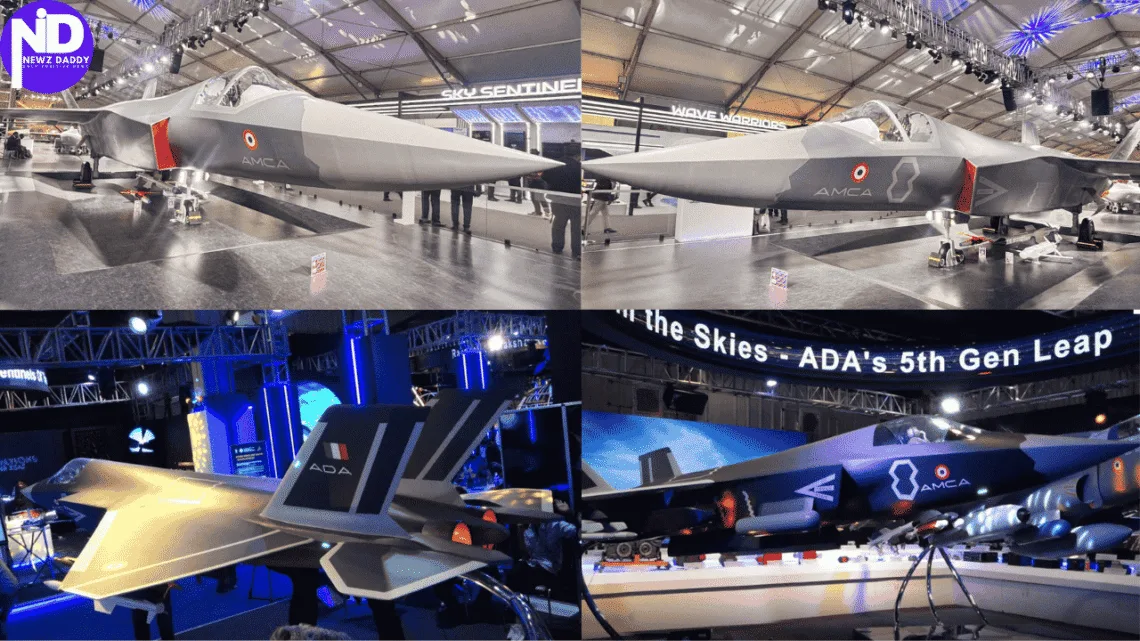India’s Fifth-Generation Fighter Jet Development Gains Momentum
Newz Daddy Defence Updates
Synopsis of the Article
- Defence Minister Rajnath Singh has approved the Execution Model for the Advanced Medium Combat Aircraft (AMCA) programme, a significant step in India’s pursuit of self-reliance in defense manufacturing
- The Aeronautical Development Agency (ADA) will lead the AMCA project in partnership with both private and public sector companies, allowing them to bid independently, as joint ventures, or as consortia, provided they are Indian entities compliant with national laws.
- This approach marks a departure from previous practices where state-owned enterprises like Hindustan Aeronautics Limited (HAL) were directly assigned such projects without competition
- The ADA is expected to issue an Expression of Interest (EoI) soon for the development phase of the AMCA, which aims to produce India’s first fifth-generation stealth fighter jet.
- The AMCA project is aligned with the ‘Aatmanirbhar Bharat’ initiative, aiming to enhance indigenous defense capabilities and reduce dependence on foreign imports.
- The Indian Air Force plans to induct seven squadrons of the AMCA, with the prototype expected by 2031 and full-scale production commencing by 2035.
In a landmark decision, Defence Minister Rajnath Singh has approved the Execution Model for the Advanced Medium Combat Aircraft (AMCA) programme, propelling India into the elite group of nations developing fifth-generation stealth fighter jets
The AMCA project, spearheaded by the Aeronautical Development Agency (ADA), introduces a novel execution model that invites participation from both private and public sector companies. These entities can bid independently, form joint ventures, or establish consortia, provided they are Indian companies adhering to national regulations.
This inclusive approach marks a significant shift from traditional practices where state-owned enterprises like Hindustan Aeronautics Limited (HAL) were the sole executors of such projects. By fostering competition and collaboration, the government aims to harness the full potential of India’s industrial capabilities.
The AMCA programme is a cornerstone of the ‘Aatmanirbhar Bharat’ (self-reliant India) initiative, emphasizing indigenous development and production in the defense sector. By reducing reliance on imports, India seeks to bolster its strategic autonomy and strengthen its defense infrastructure
The AMCA is envisioned as a twin-engine, stealth, supersonic multi-role fighter aircraft equipped with advanced avionics, stealth features, and the capability to carry a variety of weapons. Its design incorporates stealth technologies, including radar-absorbing materials and an internal weapons bay, to minimize radar cross-section.
The aircraft will also feature state-of-the-art sensors, networking capabilities, and electronic warfare systems, ensuring superiority in modern aerial combat scenarios.
According to the Ministry of Defence, the ADA will soon issue an Expression of Interest (EoI) for the development phase of the AMCA. The project aims to roll out the prototype by 2031, with full-scale production expected to commence by 2035. The Indian Air Force plans to induct seven squadrons of the AMCA, significantly enhancing its operational capabilities
The development of the AMCA comes at a time of evolving security dynamics in the region. With neighboring countries advancing their military capabilities, India’s focus on indigenous defense production is both timely and strategic. The AMCA will serve as a deterrent and a testament to India’s growing technological prowess.
The approval of the AMCA Execution Model is a significant milestone in India’s journey towards self-reliance in defense manufacturing. By embracing a collaborative approach and leveraging indigenous capabilities, India is poised to develop a world-class fifth-generation fighter jet, reinforcing its position as a formidable force in the global defense landscape.
Must Read:
Defence News: Defence Chief Visits Frontline Bases, Praises Brave Soldiers






